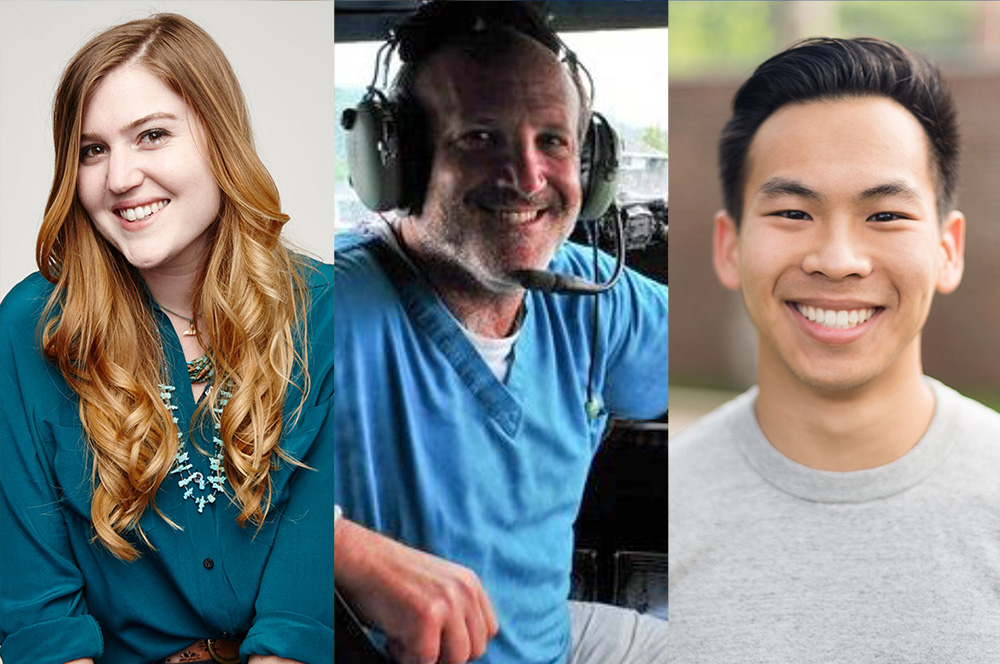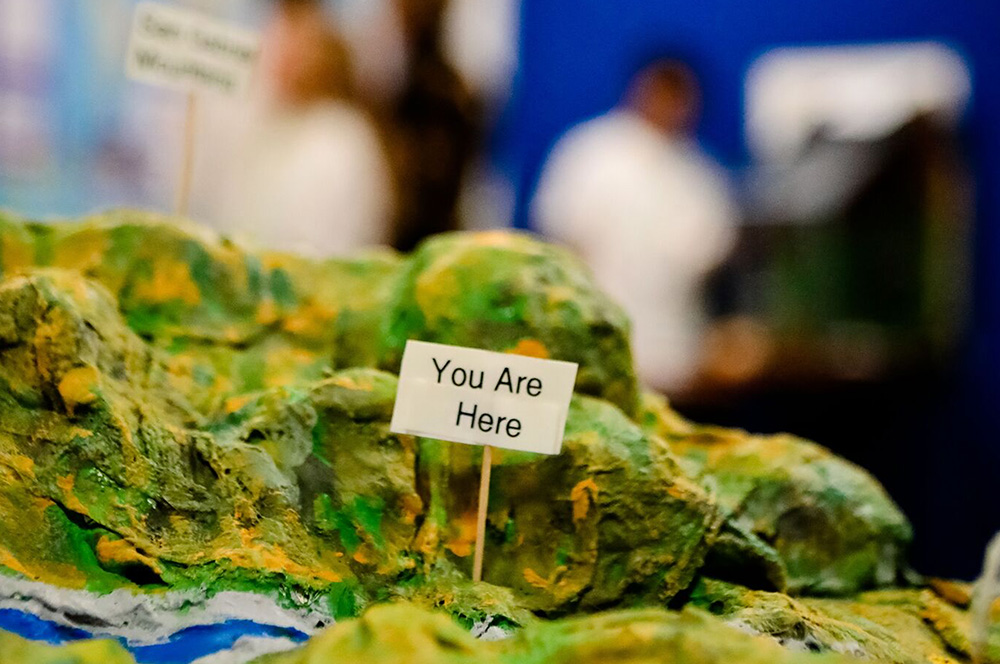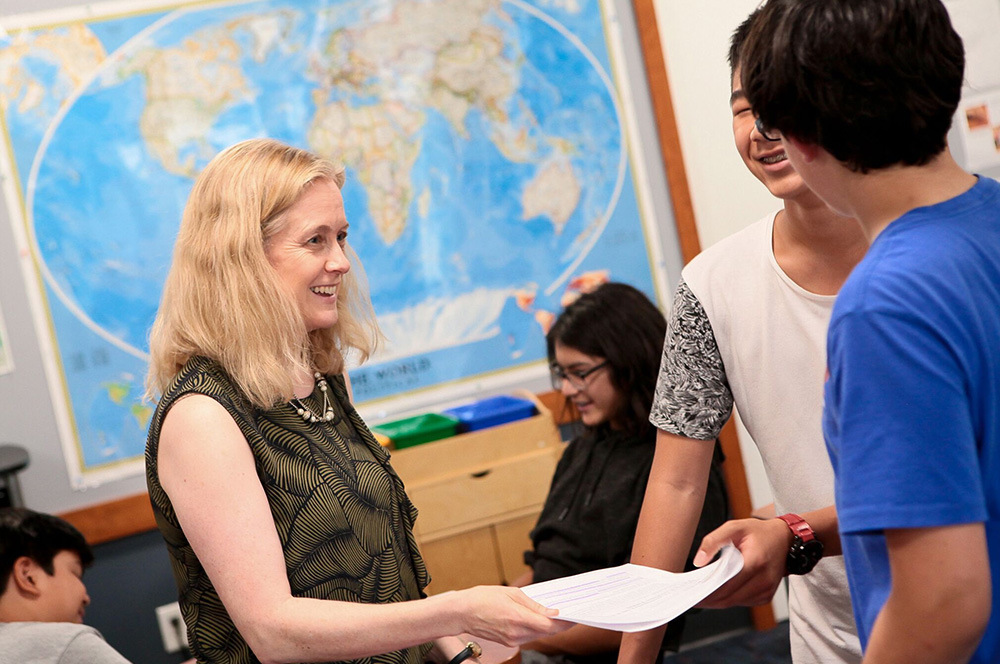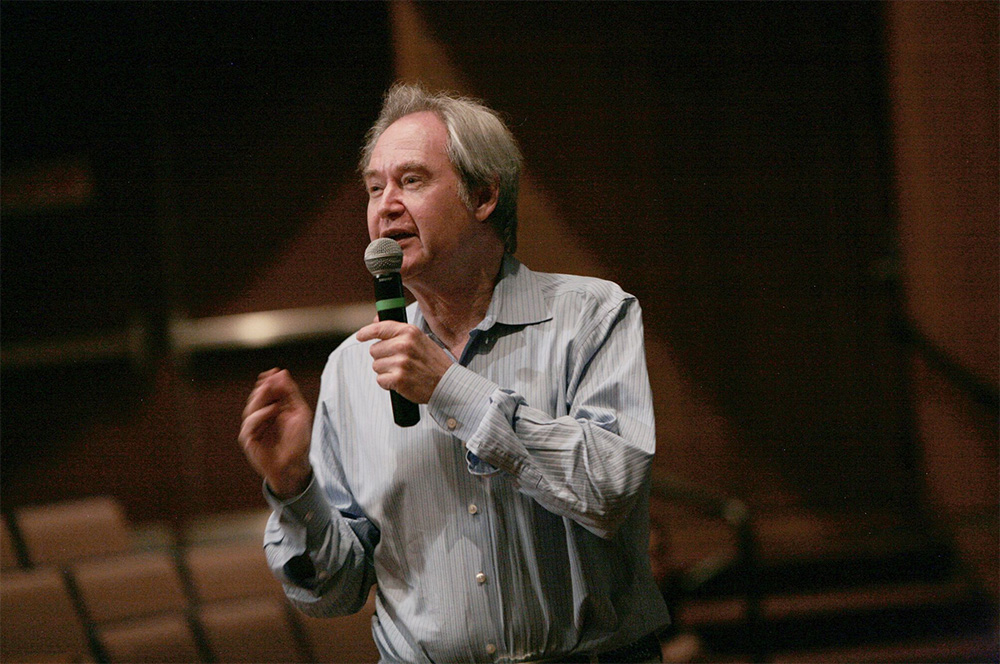We caught up with three alumni whose careers and interests span many fields but who share a drive for collaboration and innovation.
Creative Design with People in Mind
When you combine creativity with a passion for people, a sense of fearlessness and “a million Post-its,” you get Rachel Tobias ’07. Comfortable with pushing boundaries and getting her hands dirty, she’s the type to look right past limitations and face problems with nontraditional solutions.
While finishing her BA in International Relations at USC, Tobias dipped her toes in the nonprofit world and became involved with the campus social entrepreneurship center. She joined the team of her former professor and Kiva founder Jessica Jackley at her newest startup, ProFounder, and took on a fundraising position at The Green School, an international school in Bali. She continued considering ways she might use business solutions to solve social problems. With her fast-paced, efficient mind, she found many nonprofits run inefficiently—and she wanted to change that.
“I became more curious about the basic principles of business—effectiveness, efficiency, scaling, etc.,” she says. She asked herself, “How do we use these tools to create more sustainable approaches to big, global problems?”
Tobias sought opportunities that would allow her to do just that. That’s when she found IDEO, a global design company in Palo Alto that helps organizations innovate products, services and new ventures. Getting a broad view of the market while learning from different companies in a creative environment fascinated her, so she embraced the role of consultant there.
She recalls dozens of industries she’s worked on innovation projects with at IDEO: automotive, medical, pharmaceutical, athletic and many others. Bouncing between fields keeps Tobias on her toes, but it also equips her with a uniquely well-rounded toolkit.
“I can take on a health project, for example, and reach back to an insight from a past automotive project as inspiration. Being able to cross-pollinate is so important to the way we work.” She traces the theme of interdisciplinary learning back to her Prep days and beyond (she once challenged herself to sew cellular models for her bio class instead of just drawing them). “Prep made it okay to explore beyond the curriculum.”
At IDEO, this kind of work is an everyday habit. The unpredictability of it satisfies her creative urges, but she never abandons the people-first mentality that got her there.
She pulls out a pen and sketches a Venn diagram with three circles containing “what’s desirable from a human perspective,” “what’s viable from a business perspective” and “what’s feasible from a technical perspective.” The intersection is key to innovation, she says. “In Silicon Valley, we see a lot companies designing a ‘thing’ and then trying to make it desir-able. But at IDEO, we start our process from the human side. Let’s forget our biases, try to discover the unmet human needs and design from there.
“Design-thinking forces you to be humble, step back and take yourself out of the equation,” Tobias says. “It’s something we’re measured against at IDEO. We prioritize the success of others over our own, which is really powerful.”
Bringing Creativity to Medicine
Hiking up to Monticello, the house that Thomas Jefferson built, Dr. Ross Isaacs ’76 quotes Maimonides, the medieval Jewish philosopher who said, “May I see in the afflicted and suffering only a fellow human being.”
Isaacs is guided by philosophy and experience. As a medical student, he worked with the poorest Mexican patients. After he was established as a kidney, liver and pancreas transplant specialist at the University of Virginia, he gave more and more of his time to medically underserved people in Nepal and Haiti, at domestic emergencies like hurricanes Katrina and Rita and in his home region of Appalachia.
What Isaacs saw throughout the US galvanized him to do more to root out the causes of kidney disease, diabetes and other end-stage maladies that require transplants; a major contributor is obesity. “I would love to make myself obsolete,” he says. “It’s my biggest kick to get people who are Type 2 diabetics off insulin.”
In the exam room, Isaacs teaches patients simply that muscle is more efficient than fat, that dieting doesn’t work and that exercise has major benefits for mind and body. Now, he wants to bring his blend of nonjudgmental explanation and continuing support to as large an audience as possible.
Isaacs envisions a non-profit virtual network, a mirror of the one he used to practice telemedicine in Appalachia. He’s tapping people all over the US who have expertise in physical training, meditation, psychology and medicine. They will work with patients, both in person and virtually, in an ongoing, supportive and effective program. Most importantly for Isaacs, full-pay patients will subsidize lower- or non-paying patients. Everyone will get the same access to expert support and the power to take control of their bodies and lives.
“The press plays obesity as a moral fault. I disagree. Calling it that doesn’t help or prevent disease. We’ll present the facts without judgment and let biology do what it does,” says Isaacs, who can point to hundreds of patients in America’s poorest areas who have benefited from his one-on-one advice.
Ultimately, his start-up will include telemedicine, podcasts, conferences, scholarships, retreats and one-on-one sessions. “I wanted to go into medicine and change the world,” says Isaacs. “And now I think I’m going to make a dent.”
Local Inspiration, Global Implications
Vick Liu ’16 has a track record of initiating big projects. As a Prep sophomore, in response to a friend’s leukemia diagnosis, he developed a portable device that separates different types of blood cells, making it easier for a computer or technician to diagnose blood disorders. He ended up being honored by the State Science Fair for it.
Fast forward four years, and he’s doing the same thing at MIT. At an orientation entrepreneurship exercise, he and a small team were challenged to create and pitch an invention in five minutes.
Looking for something he felt proficient in, his mind jumped straight to his experience as an Eagle Scout. “Sleeping bags,” he thought—simple, practical, familiar.
The idea stuck. Liu found himself revisiting the project, wanting to move forward but not quite feeling satisfied with it yet. Then, he came across an article about the rising Syrian refugee crisis. One image in particular haunted him: displaced children forced to sleep on cardboard. Here, he thought, was a pressing need for his creative solution. He pinned the photo to his dorm wall and started brainstorming.
Liu’s mind flashed back to fellow Prep student Shant Armenian’s ’20 CIP project, a panel discussion featuring Syrian refugees. “When I came up with the idea for TravlerPack, I thought of Shant’s panel, and I reached out to him to connect with some of the panelists.”
More inspired than ever, Liu began researching and forming a team of passionate students from several disciplines—videography, photography, logistics, sewing, finance, engineering. They crafted successful prototypes, secured funding and gained national media attention.
He attributes the project’s success to a few key factors. First, its simplicity. “Successful innovation is usually simple and practical,” Liu says. “If it gets too complicated, it gets expensive. If it’s too expensive, we can’t send as many sleeping bags to Syria.” Second, he formed a team with varied skills. “I love interdisciplinary work,” he says. “I see the benefits of having that on a team…people in other fields think about things I would never think about.” Third, he says, innovation should meet a specific need. “The project itself is so pure; we’re not taking any money home, we’re just trying to help people. That itself motivates a lot of people.”
Now, the group has finished its final crowdfunding campaign—they’ve raised over $50,000, and every penny of it will go to sending TravlerPacks to Syrian ref-ugees.
So what’s next for the group? “We’re already looking into Lebanon,” he says, with excitement in his eyes.




